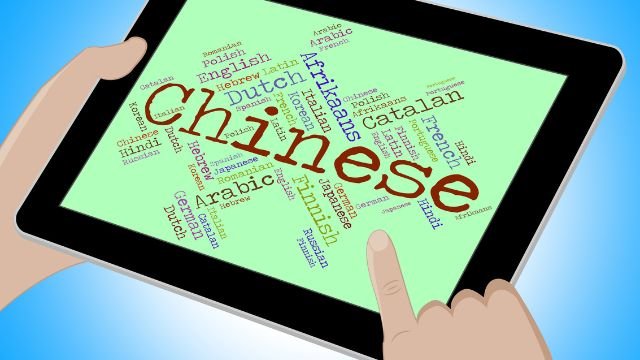There is a misconception that some languages are harder to learn than others. Any language’s learning difficulty is largely influenced by the learner’s native tongue. It is nearly difficult to compare every language in the world because there are more than 7000 of them. These linguistic characteristics add to these languages’ perceived difficulty, rendering them tough but also fascinating for language learners who are passionate about doing so.
By 2023, there will be hundreds of languages spoken around the world, each with its own special complications and difficulties. The “most difficult” languages might vary depending on your mother tongue, educational background, and personal propensity for learning languages, among other variables.
Most Difficult Languages in the World
| S.No. | Language | Difficulty Factors |
| 1 | Mandarin Chinese | Complex writing system (50,000+ characters), tonal variations, ideographic characters. |
| 2 | Arabic | Intricate script, right-to-left writing, various dialects. |
| 3 | Japanese | Three scripts (Hiragana, Katakana, Kanji), language levels. |
| 4 | Korean | Unique writing system (Hangul), complex honorifics, phonetic complexities. | |
| 5 | Turkish | Rich vocabulary, extensive use of suffixes, unique alphabets, SOV sentence structure. | |
| 6 | Icelandic | Archaic features, complex inflectional system, rich vocabulary. |
| 7 | Russian | Cyrillic alphabet, six grammatical cases, rich verbal aspects. |
| 8 | Hungarian | Agglutinative nature, long and intricate words due to numerous affixes. |
| 9 | Finnish | 15 grammatical cases, vowel harmony, unique linguistic structure. |
| 10 | Tuyuca | Complex system of evidentiality indicating the source and certainty of information. |
But in 2023, the following ten languages are frequently cited as among the hardest for English speakers and students:
1. Mandarin Chinese
Mandarin Chinese is known for its intricacy, with over 50,000 characters, tonal variations, and a logographic writing system.
Why is Mandarin regarded as the world’s most difficult language?
One of the hardest languages to learn, according to many, is Mandarin. Despite having a straightforward syntax, Mandarin is very challenging to learn since it differs greatly from other widely spoken languages like English, Spanish and French.
The 4 different tones in the language are the most crucial aspect to get right. In essence, tones pertain to how words are pronounced. Every word has four distinct meanings as a result of the variance in tonality.
Mandarin is also an ideographic language. This means that, in contrast to alphabets and words like in the English language, Chinese symbols are used in Mandarin writing. Learning and mastering the tens of thousands of symbols required to read and write in Mandarin can take some time.
2. Arabic
Arabic is a difficult language to learn because of its complex writing system, right-to-left writing orientation, and wide range of dialects.
Why is Arabic regarded as the world’s most difficult language?
Many claims that Arabic is one of the most difficult languages to learn because it bears little resemblance to other widely used European languages.
3. Japanese
Three writing systems (Hiragana, Katakana, and Kanji) as well as thousands of Kanji symbols must be learned in order to write in Japanese.
Why is Japanese regarded as the world’s most difficult language?
- The majority of English-speaking people consider the Japanese language to be among the most difficult to master. Along with its difficulties, the language’s distinctive characteristics heighten attention.
- Each person is required to master the three scripts Hiragana, Katakana, and Kanji. While Katakana and Hiragana are phonetic alphabets with a constant tone. Kanji, on the other hand, is more complicated and developed from Chinese symbols.
- Japanese grammar is incredibly easy to comprehend and rarely causes learning difficulties.
- Depending on the situation, Japanese people use different speech rates. Gaining a thorough understanding of the subject and learning both the keigo language level for formal use plus the language for everyday use is crucial.
4. Korean
Korean presents a challenge to non-native speakers due to its distinctive writing system (Hangul) and intricate honorifics.
Why is Korean regarded as the world’s most difficult language?
- The US Foreign Service Institute has listed Korean as one of the most difficult languages for native English speakers to master.
- It belongs to a family of languages known as Koreanic in Korea.
- The Hangul alphabet is used for the Korean language.
- Although Hangul is read from top to bottom, it is written from left to right.
- The language has a subject-object-verb (SOV) structure.
- Korean is a phonetic language with several layers that is difficult to learn. Korean pronunciation can be challenging and requires practice.
- The language is unusual. However, borrowing terms from other languages can be a useful starting point.
- Similar to the Japanese language, Korean uses honorifics to indicate different language levels. One will sound more genuine and at ease during talks if they are aware of this and its subtle subtleties.
4. Turkish
Turkish is a member of the Ural-Altaic language family, along with Finnish and Hungarian. As a result, it is included to the list of the most challenging languages in the world.
Why is Turkish considered to be the hardest language in the world?
Turkish has a large and diverse vocabulary. Its structure is phonetic. 39 languages make up the Turkish language family.
Among the language’s characteristics are:
- Latin script is also used for Turkish.
- In the Turkish language, suffixes are frequently used and depend on a variety of different circumstances.
- There are many Turkish alphabets that are unique to Turkish. Thus, pronunciation can be challenging.
- It uses a subject-object-verb (SOV) structure for framing sentences.
6. Icelandic
Many ancient characteristics of Icelandic are still present, such as a sophisticated inflectional system and a large vocabulary.
Why is Icelandic considered to be the hardest language in the world?
The lack of word acquisition from English and other languages is an intriguing characteristic that sets Icelandic apart from the other languages.
Some other important features of the language are –
- Icelandic and German sound systems are comparable.
- The pronunciations can be difficult for English native speakers to acquire. The grammar makes things more challenging.
- Icelandic vocabulary is entirely native and contains very few terms that have been borrowed. The creation of new terms is also the responsibility of a committee in Iceland. Consequently, the vocabulary keeps growing. For instance, the term “snow” has 50 different meanings in Icelandic.
7. Russian
Russian is a challenging language to learn because of the Cyrillic script, six grammatical cases, and a sophisticated verb aspect system.
Why is Russian regarded as the world’s most difficult language?
- Since the Latin alphabet used in English and several other languages is different from the Cyrillic script used by Russian, learning a new set of letters is necessary.
- There are six grammatical cases in the Russian language, each with its own rules for noun and adjective declensions. The sentence structure and word endings become more complex as a result.
- Russian verbs feature a complicated system of perfective and imperfective aspects, which alter the action’s meaning and force learners to pick the right one in light of the context.
8. Hungarian
Hungarian is notoriously agglutinative, stringing together a lot of affixes, which makes it difficult to learn.
Why is Hungarian considered to be the hardest language in the world?
- In order to express grammatical information, the agglutinative nature of the Hungarian language necessitates the addition of various affixes (prefixes and suffixes) to words. Long and complicated words may result from this.
- Hungarian frequently combines several affixes onto a single word, creating complex word formations and difficult-to-understand sentence constructions.
9. Finnish
Finnish is a distinctive and complicated language due to its extensive use of cases and vowel harmony.
Why is Finnish considered to be the hardest language in the world?
- There are 15 grammatical cases in Finnish, each of which performs a certain grammatical task. There is a high learning curve because the case affects how noun and adjective forms are formed.
- The vowels inside a word must harmonize under the vowel harmony system used in Finnish. This makes word formation and pronunciation more difficult.
10. Tuyuca
The language of the Amazon Rainforest, known as Tuyuca, has a sophisticated system of evidentiality that explains how one knows the information being given.
Why is Tuyuca considered to be the hardest language in the world?
- The intricate structure of evidentiality used in Tuyuca implies that verbs not only describe what is being done but also how the speaker came to know the information.
- This necessitates that students focus intently on the source and reliability of information when speaking.
Conclusion
Keep in mind that language difficulty is somewhat subjective; what one person finds tough, another person may find to be relatively simple. The quantity of exposure to a language and the tools that are available can also have a significant impact on how difficult a language is regarded to be to learn. Don’t allow a language’s complexity deter you if you’re passionate about learning it; with perseverance and the correct tools, you can become fluent in even the most tough of languages.

Rahul Kumar is a passionate educator, writer, and subject matter expert in the field of education and professional development. As an author on CoursesXpert, Rahul Kumar’s articles cover a wide range of topics, from various courses, educational and career guidance.




